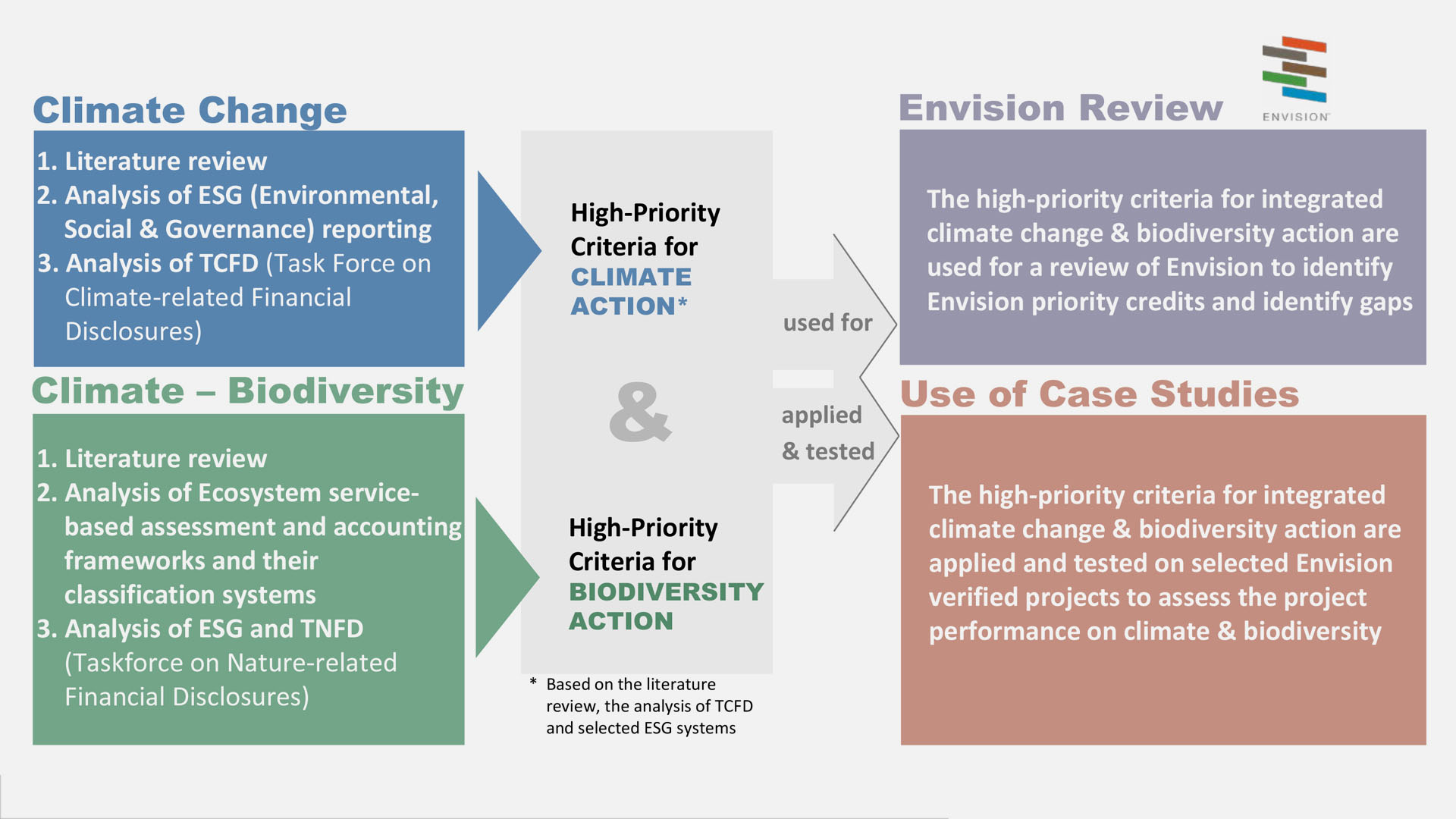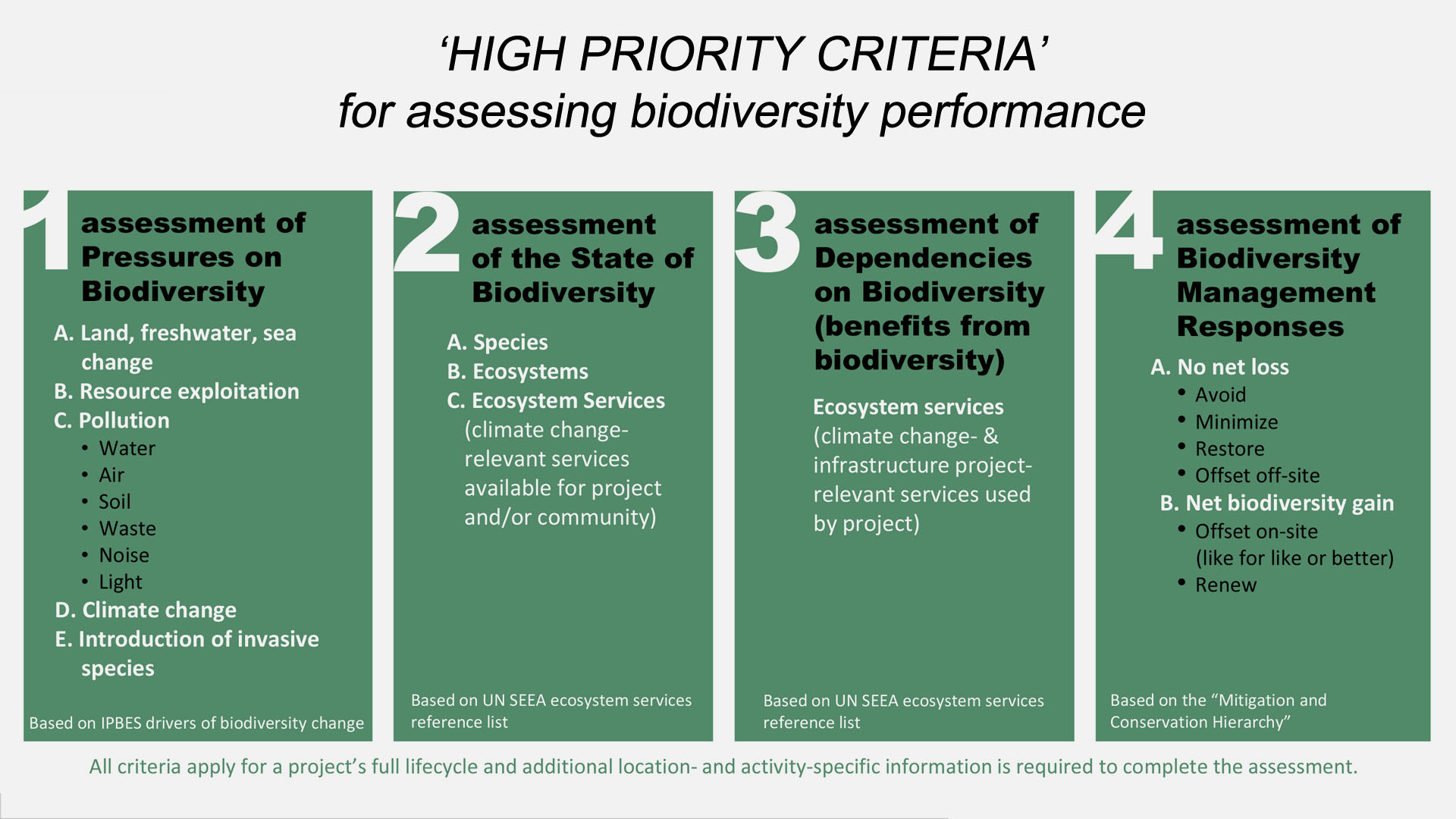The 2021-22 ZHP Research on assessing infrastructure projects’ integrated climate-biodiversity action is continuation of the 2020-21 research on climate action. It expands the boundary of research to capture two additional research areas (a) the risk of climate change on biodiversity and (b) biodiversity’s role in climate action.
The work is motivated by emerging evidence of a biodiversity crisis in parallel with the climate crisis and the related ongoing discourse on the need for integrated solutions to deal with both threats simultaneously and pairing climate and biodiversity global targets. Awareness of biodiversity loss as a threat to humans and their activities is gaining momentum internationally, also reflected in ESG reporting practice.
The ‘twin’ biodiversity and climate crises redefine what the ‘right projects’ should be, moving from a climate-focused to an integrated climate-biodiversity solution. The expanded research scope aims to assist the Envision framework in identifying and prioritizing projects that demonstrate the most robust win-win solutions for climate change action and biodiversity.
The research builds upon the methodology developed for the 2020-21 research on climate action. Emerging global nature-positive targets and goals were identified based on a literature review (a) on biodiversity and the climate-biodiversity nexus. The analysis of selected established ESG (Environmental, Social, and Governance) standards, Ecosystem assessment and accounting systems and biodiversity-related reporting frameworks like the recently established Taskforce for Nature-related Financial Disclosures (TNFD) initial recommendations provides additional insight on how biodiversity-related performance is defined and communicated to investors.
Based on the literature review findings and the systems analysis, key criteria for assessing a project’s biodiversity-related performance were identified and used for a targeted analysis of Envision. In combination with the identified key criteria for climate change, these criteria represent key criteria for integrated climate-biodiversity action.
The analysis focused on (a) how Envision assesses project biodiversity performance, (b) if Envision is in line with current trends and methods, (c) if the potential of Nature-based solutions is adequately captured.
The findings of the review process were synthesized as follows:
• identification of gaps in Envision’s biodiversity-related assessment of projects and guidance to project teams,
• potential recommendations to Envision on how to address the identified gaps and enhance its integrated climate-biodiversity assessment and guidance, and
• prioritization of 15 Envision credits to assist in selecting the right projects for integrated climate-biodiversity action, which is critical in the current ‘twin’ biodiversity and climate crises .
Further resources
Research team
Program & Research Director
Prof. Spiro Pollalis, pollalis@gsd.harvard.edu
Research Associates
Evgenia Hagistavrou, genhagistavrou@gmail.com
Angela Kouveli
Dimosthenis Lappas
Eleonora Marinou
Olga Tzioti
Judith Rodriguez




